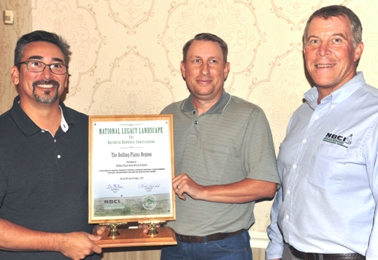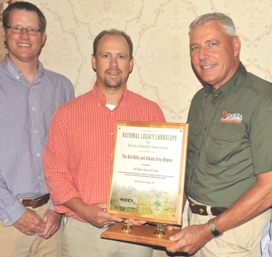GALLOWAY, New Jersey — Decades, and in one case a century, of good land stewardship and aggressive bobwhite management and research across millions of acres on opposite ends of the bobwhite range were recognized here recently as the 34-million-acre Rolling Plains of northwest Texas and western Oklahoma and the 700,000-acre Red Hills/Albany region of north Florida and southwest Georgia were each declared a Legacy Landscape for Bobwhite Conservation.
The National Bobwhite Conservation Initiative (NBCI) and its technical advisory body, the National Bobwhite Technical Committee (NBTC), announced the designations during the annual meeting of the nation’s bobwhite experts.

“While most of the nation’s bobwhite managers are focused on restoring diminished bobwhite habitats and populations, it’s important to remember that some regions of the country have remained bobwhite bastions, said NBCI Director Don McKenzie. “The national bobwhite community wants to recognize and encourage long-standing efforts to conserve and maintain the remaining vast areas of existing bobwhite habitat, whether through management practices or other decisions, that provide long-term viability of not only wild bobwhite populations but also many other associated species McKenzie said. “Both the Rolling Plains and the Albany/Red Hills regions are longstanding national models for such efforts and tradition, and we commend these regions, their landowners and others for this enviable status.”
Primary criteria for the Legacy Landscape designation includes an extensive area of ecologically “contiguous” habitat that has for decades or longer supported high densities of wild northern bobwhites, a long-term tradition of purposefully implementing or maintaining land use practices that support bobwhite habitat conservation, and landowners, hunters and other stakeholders who have demonstrated strong support for quail hunting, management and/or quail research over multiple decades.
The Rolling Plains region is generally described as the area about 100 miles either side of a line from Sweetwater, TX to Sweetwater, OK. This ecoregion’s landscape holds large sections of contiguous habitat that have long supported significant bobwhite populations, and landowners have implemented purposeful bobwhite habitat management for decades. About 60% of the Rolling Plains is rangeland and 30% is cropland. The major land uses are ranching (beef cattle) and farming (mostly dryland wheat and cotton). A strong and growing research network of several institutions has also become established in the last eight years.

The Red Hills portion of the Albany/Red Hills region lies between the Aucilla and Ochlocknee rivers from Thomasville to the Cody Escarpment in Florida, while the Albany portion is located on the Dougherty Plain in southwest Georgia. This region is a unique, diverse landscape of expansive pine savanna harboring the largest bobwhite population in the southeastern U.S., with populations sustained at high densities across a contiguous managed landscape. More than 700,000 acres are managed across more than 200 properties (ranging from 300-20,000 acres) using frequent prescribed fire to mimic and restore the natural fire history. This is the only region in the Southeast that has consistently applied prescribed fire to the land in natural frequency for over 100 years and it is home to the best quality remnants of old-growth longleaf pine forests. Additionally, the region has nearly a century of bobwhite research which continues today.
<
p class=”Default” align=”center”>###
Headquartered at the University of Tennessee’s Institute of Agriculture, NBCI is an initiative of the National Bobwhite Technical Committee (NBTC) to elevate bobwhite quail recovery from an individual state-by-state proposition to a coordinated, range-wide leadership endeavor. The committee is comprised of representatives of 25 state wildlife agencies, various academic research institutions and private conservation organizations. Funds for NBCI are provided from a variety of sources, including the respective state wildlife agencies, the Wildlife Restoration Program and Park Cities Quail.
August 12, 2015

